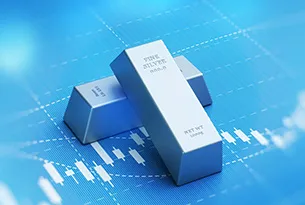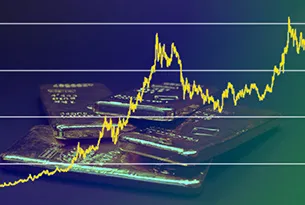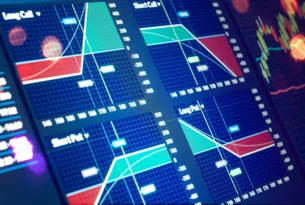Agricultural commodities like corn and wheat were left only to pros years ago, but Dan Gramza tells why they're now favorite markets for retail traders and reviews important price drivers.
More and more retail traders are trading agricultural futures these days, especially grains. Our guest today is Dan Gramza to talk about that.
So Dan, why are we seeing more interest from retail traders in wheat and corn when 20 years ago especially, it was purely the reign of professionals?
A couple of reasons, I think, Tim. And first, I think you're right on target. We are seeing more traders there. We're seeing them there, for one, because technology allows easy access to the market.
I mean, what's fantastic about trading today, it's so easy. I push a button, and bing, I'm in the market, right? Well, what's bad about today is that I can push a button and it's so easy. It's the other side, too. The fact is that technology has made markets globally accessible.
The other thing that's driving the grains, though, is the alternative investment idea. People look at interest rates in the United States and they say, “Where do I put my money?” They may take 10% or 15% and maybe look at those futures markets, for example, because that's where you and I could invest in those grains.
If I look at those, my advantage is that we see volatility, and that's what people are looking at, because as a trader, volatility means potential for profit.
So I think that is attracting the kind of money that we haven't seen in the past.
Alright, let's talk about one of those markets specifically: corn. On a trip to Ohio recently, I saw all the cornfields empty because it had been too wet there. They hadn't been able to plant.
Sure enough, the next week, the Agricultural Department comes out and says supplies are low and the price had shot up. It's come off of this a little bit.
What are your thoughts on corn here for the rest of the year?
Oh, that's a great observation. You know, Tim, let's take your idea and take it a little bit further. You know, we've had some floods over the last few months in the United States. If you look at the farm area that has been flooded—intentionally and unintentionally—it's the size of Massachusetts.
Now here is the thing that I think you and I need to be careful about. First, we're in the time of year, not only beginning now, but going forward to the next few months, where we are going to see a market that's moving on anticipation.
We don't know what the grain crop is. We don’t know what corn is until we harvest the stuff and we say, “Hey, this is how much we have; this is how much we had from last year; this is what globally we need. Do we meet that demand?” Right? That's the bottom line, but we don't know that answer.
NEXT: Trade the Facts, Not Your Beliefs
|pagebreak|But what we see is the market anticipating some kind of event. So we did see that rally over the last few weeks. We did see a market getting stronger, but more recently, we saw it backing off because they said “Maybe our estimates for corn weren't that far off.”
Here's the thing that I think you and I need to be careful about. In 1993, we had a similar situation when the Mississippi overflowed its riverbanks.
I remember driving down to the Hopi Indian grounds with my wife and we saw, my gosh, as far as you could see, land flooded with all this water. I was kind of long soybeans and I thought, “Boy, this is the year of the beans!” “The beans in the teens” is what I was thinking.
Sure enough, they did rally; but what I kept doing for the rest of the year is I kept trying to buy the break. In other words, as the market was coming down, I'm trying to get on that long side because I believe it looks so bad.
Bottom line is this; the market's right. Instead of selling the market, taking advantage of that movement, I was trading my belief and not the price action that we're seeing there.
What we did find that year—one that I thought was absolutely terrible—we lost about 10% of our crop. It wasn't that bad. Other parts of the country had the ideal growing conditions and we had a pretty good year.
I think that's what you and I need to be sensitive to. We need to be sensitive to what we see from a fundamental point of view and what the reality is going to be. We have to be prepared for some volatility.
And also be willing to change your mind if your belief isn't what you're seeing in the markets and be able to trade the opposite of that.
Tim, that's such a good observation. That's exactly right. The Daily Market Studies videos on DanGramza.com and MoneyShow.com say that right now, we would be short these markets because the market's coming down.
Do I believe in that? No, I don't, actually. Personally, I'm looking for wheat to go up. I'm looking for corn to go back up.
I don't think we have enough globally to meet demand, especially in the markets longer term. I'm on the short side because that's what price is doing.
Long term, I'm more leaning to the wheat side long term. The issue for us is as a trader, price determines what we do; not my belief. That puts money in my pocket and takes money out of my pocket.
Related Reading:




































